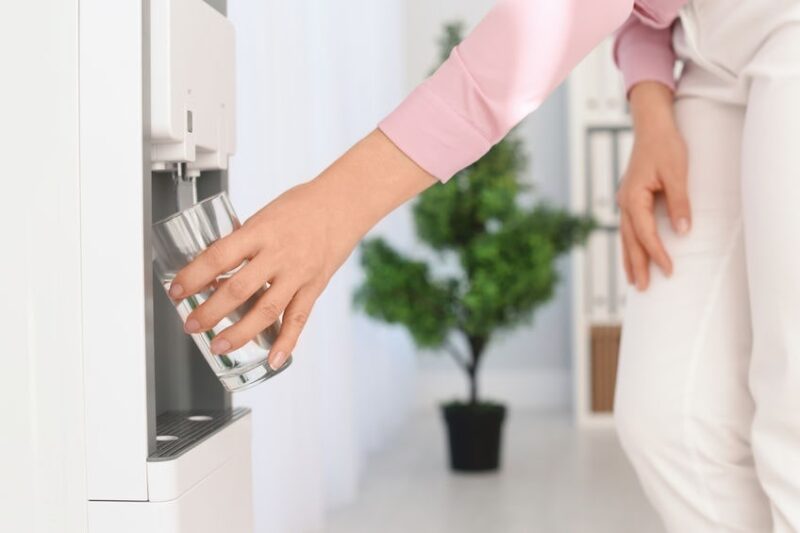In recent years, there have been numerous disasters that contributed to people consuming unsafe water. A storm in Australia caused contaminated water in Melbourne. The storm brought down trees onto power lines, causing power outages. The power cuts lead to untreated water from Silvan Dam flowing freely into the water supply system. In the United States, California bushfire fires have contaminated the water with toxic substances, ash, and debris, making the water unsafe to drink. The Flint water crisis in Michigan has exposed hundreds and thousands of residents to elevated lead levels, and it’s still not resolved after the contamination started in 2014.
How Can We Ensure Our Safety?
Kate, a high-end California restaurant owner, found herself in hot water after the biofilm was found in a water line, contaminating the drinking water. Despite rigid hygiene measures and extensive staff training, her restaurant still received complaints from customers who came down with food poisoning. It’s caused her to lose money by refunds and compensation, and the bad online reviews are permanent. In salvaging her restaurant, she looked into several sanitation methods for a cost-effective sanitation process that can ensure the drinking water is safe to serve.
UVC as a Chemical-free Sanitation Method
There are several sanitation processes for restaurants and central kitchens. Each can achieve different levels of disinfection. Ozonation and UV Irradiation are two widely used disinfection methods with applications in food and beverage, healthcare, water line disinfection, and other industries. Both methods are chemical-free. UV sanitation uses UV lamps or UV chambers to direct UV rays in an area to reduce the spread of bacteria. For this reason, UV lamps are often called germicidal UV lamps. These germicidal UV lamps use ultraviolet light to neutralize a virus, but it’s effective if the virus is directly exposed to the radiation.
Some of these UV lamps generate ozone. UV Ozone generators can emit byproducts that, when inhaled, can be irritating to the airway, much like corona discharge ozone generators. Although UV light systems effectively kill many germs, the system must be used along with chlorine for residential pool sanitation, and these UV systems are expensive, ranging from $500 to $2000.
What is Ozone Sanitation?
Ozone is a highly reactive oxidizer that oxidizes almost everything from inorganic compounds to bacteria. Ozonation uses ozone to diminish infection and viruses and bacteria. Due to its highly reactive properties, the ozone used reverts back to oxygen immediately after disinfection, leaving it safe and with no residual ozone or other compounds. When ozonation is used to disinfect water, it doesn’t create a bad “aftertaste” as chlorine does. On the contrary, it is widely used specifically for its odor removal properties.
Ozonated water has come on top as a more effective sanitation method compared to UV irradiation. A study from the National Key Research and Development Program of China showed that the toxin degradation rate of ozone was higher than UV irradiation by more than 11 percent. This is because, during ozonation, inorganic and organic compounds are both oxidized. This means that ozone can reduce the toxicity of pesticides to produce better than UV irradiation.
Electrolytic ozone is one of the best ways to create ozone because it generates ozone with less energy. This is a method whereby tap water is charged with electricity to infuse it with ozone at up to 28% ppm, a high enough concentration to make it lethal against bacteria and viruses, but safe for humans to use. Using this cutting-edge technology, electrolytic ozone can be affordable, stable, and easy to manage. The newest ozone creation technologies produce high-purity reactive ozone without polluting the environment with the byproduct of nitrogen oxide.
Ultra Violet (UV) light is a form of electromagnetic radiation. There are three types of UV light. UV-A and UV-B are the types of radiation that pass through the atmosphere and hit up our beaches, which give some of us a lovely tan while giving others a painful sunburn. Luckily, the atmosphere absorbs most of the third type – UV-C, the highest-energy and most dangerous of the three. Employing UV irradiation is a well-known sanitation method. It kills germs by hitting them with the most energetic type of UV light, UV-C.
Ozonated Water vs UV Light Sanitation
Ozone is the Best Chemical-Free Sanitation Method
Weighing up all the pros and cons, it is clear that ozonation is a more effective disinfection option than UV irradiation, thanks to its permeability, efficacy, and practicality. UV irradiation is highly effective under the right conditions, but ozonated water has a high reactivity that results in speedy sanitation without producing any byproducts. Meanwhile, UV irradiation requires microbes to be exposed to intense light for an extended period of time. Ozone continues to play an important role in disinfection for commercial and home applications that require sanitized water quality via environmental and chemical-free disinfection solutions. By harnessing electrical energy, and retarding the creation of oxygen, high levels of ozone can be produced without the byproducts that can harm us.
Electrolytic ozone is a step ahead of corona discharge ozone systems because the electrolytic methods do not produce harmful ozone gas byproducts, making it superior to both UVC and chemical sanitation agents.
A compact, easy-to-use, and effective ozone disinfection system
The BioSure Post-Filtration Disinfection System is one of the best systems on the market. This system uses patented electrolytic ozone to provide instant and residual-free sanitation with simple installation. This easy-to-use system can keep beverage makers, water coolers, or dental unit waterlines clean and safe.


